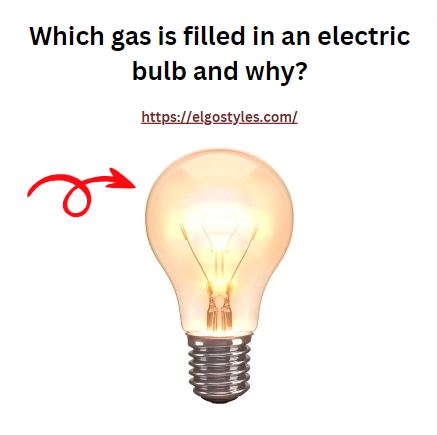Answer:
The gas filled in an electric bulb is usually inert, like argon or krypton. These gases prevent filament oxidation, ensuring prolonged bulb life by maintaining a stable environment inside.

Reasoning:
- Inert Nature: Argon and krypton are chemically inert, preventing reactions with the filament.
- Oxidation Prevention: Inert gases protect the filament from oxidizing, enhancing bulb lifespan.
- Stable Environment: The chosen gases maintain a stable environment inside the bulb, ensuring consistent light output.
- Heat Dissipation: Inert gases aid in efficient heat dissipation, reducing the risk of overheating.
- Improved Efficiency: Inert gases contribute to better bulb efficiency by supporting the filament’s longevity.
FAQs:
Q: Why is an inert gas used in electric bulbs?
A: Inert gases, like argon or krypton, prevent filament oxidation, enhancing bulb lifespan.
Q: Can any gas be used in an electric bulb?
A: Ideally, inert gases like argon or krypton are preferred for stability and longevity.
Q: What happens if the wrong gas is used in a bulb?
A: The wrong gas may lead to filament oxidation, reducing bulb lifespan and efficiency.
Q: Is the choice of gas crucial for LED bulbs?
A: No, LED bulbs operate differently and do not require filling with inert gases.
Q: How do inert gases contribute to bulb efficiency?
A: Inert gases protect the filament, ensuring stable conditions and efficient light output.
Q: Are there alternatives to argon and krypton in bulbs?
A: Xenon is another inert gas sometimes used, but argon and krypton are more common.
Q: Can a bulb work without any gas filling?
A: No, a vacuum or inert gas is necessary to prevent filament degradation.
Q: Do all bulbs use the same type of gas?
A: No, the choice of gas can vary based on bulb type and manufacturer.
Q: How does gas choice affect bulb brightness?
A: Gas choice primarily influences filament longevity, indirectly impacting brightness.
Q: Can you replace the gas in a bulb?
A: Bulbs are sealed during manufacturing, making gas replacement impractical and unsafe.
 Electrical Engineering World Wiring a Brighter Tomorrow!
Electrical Engineering World Wiring a Brighter Tomorrow!


